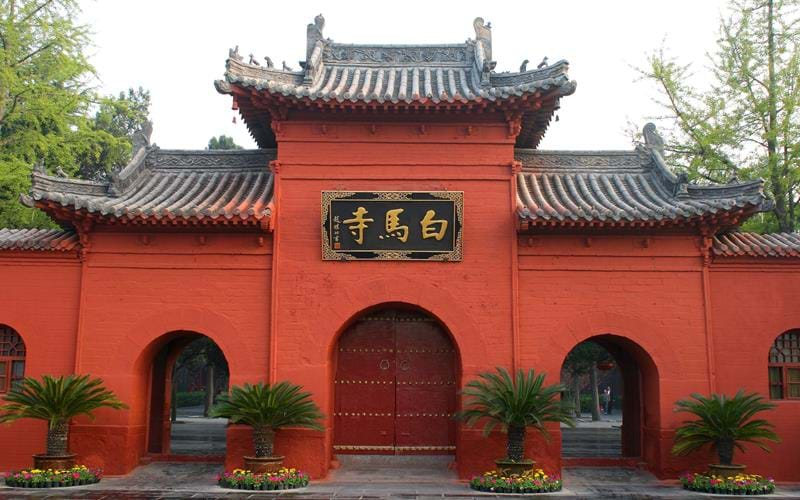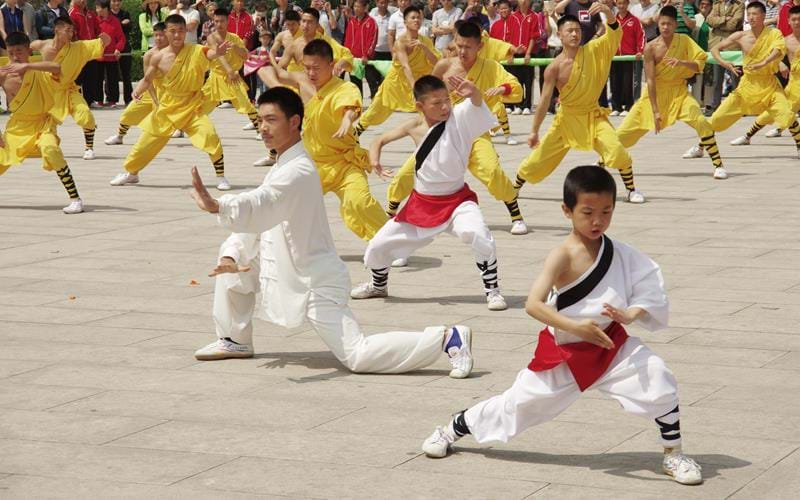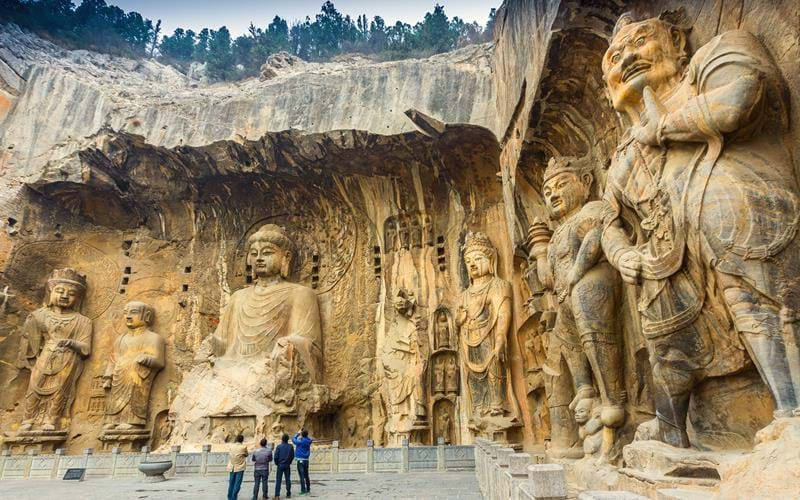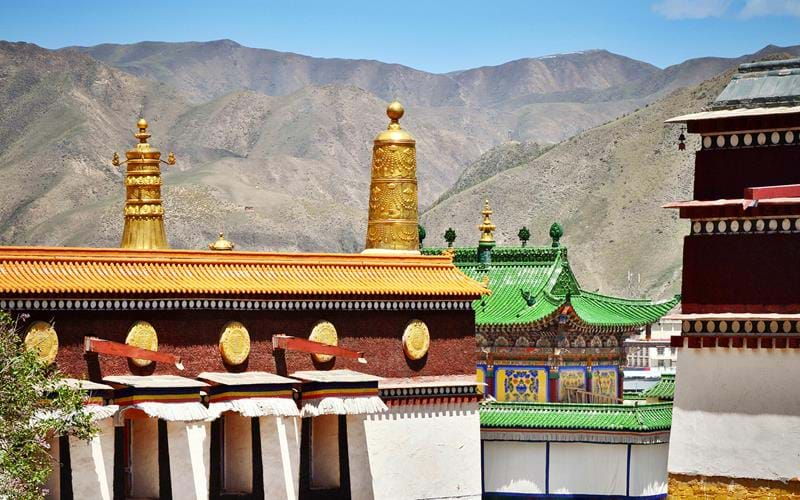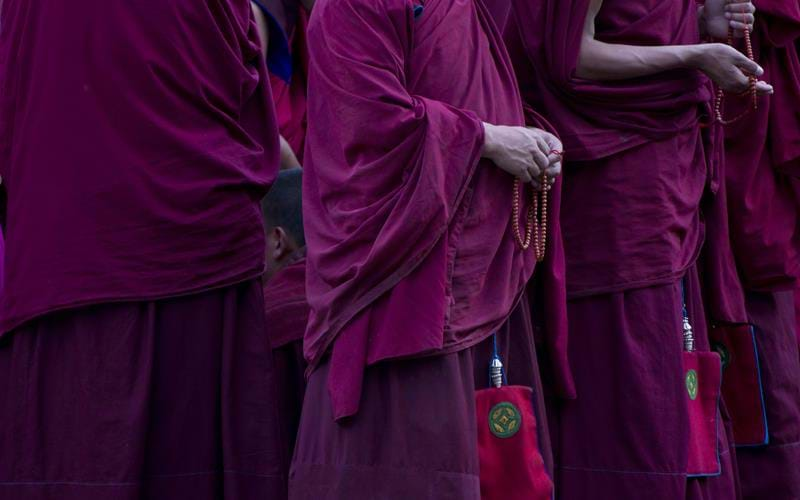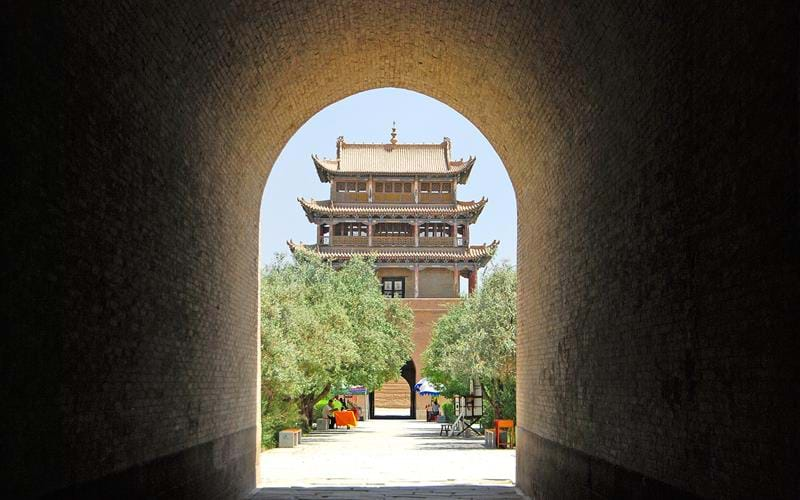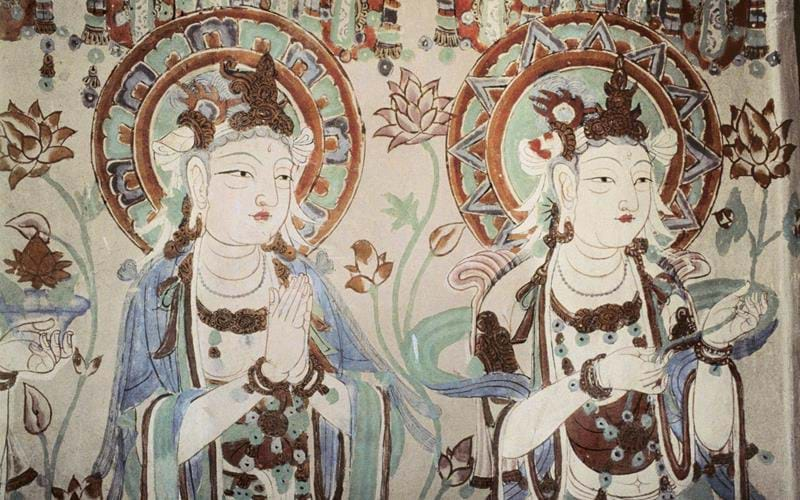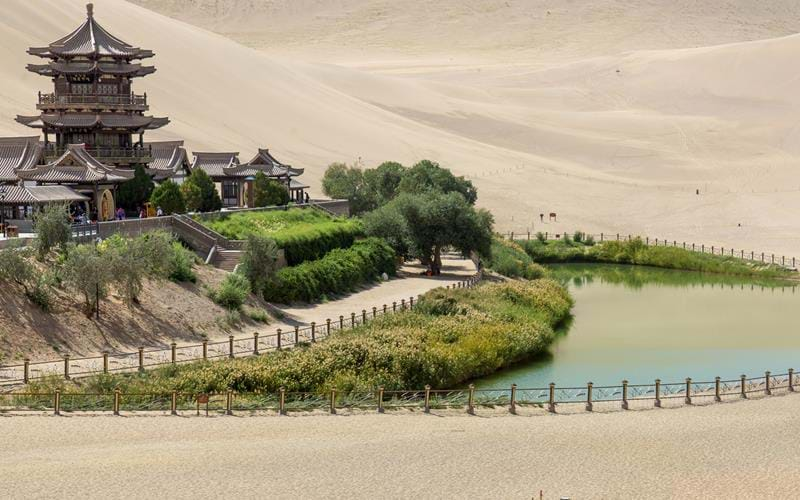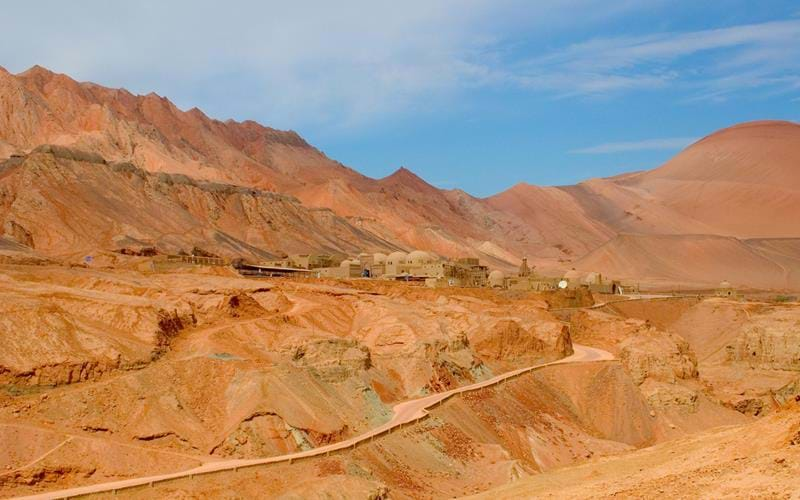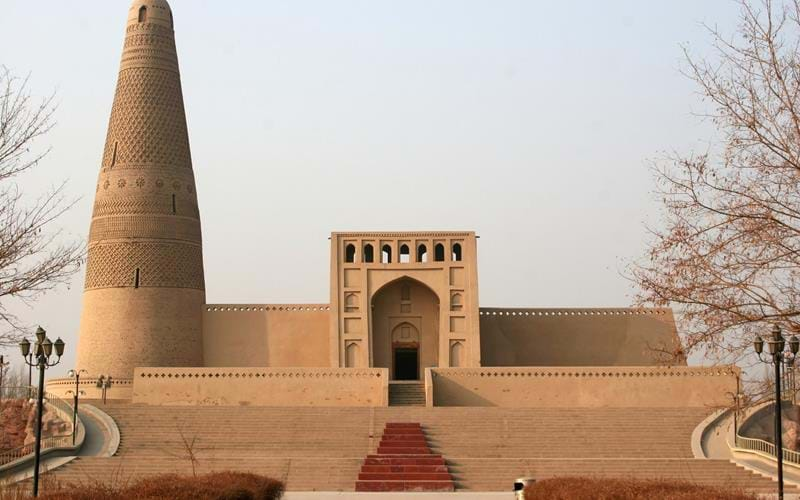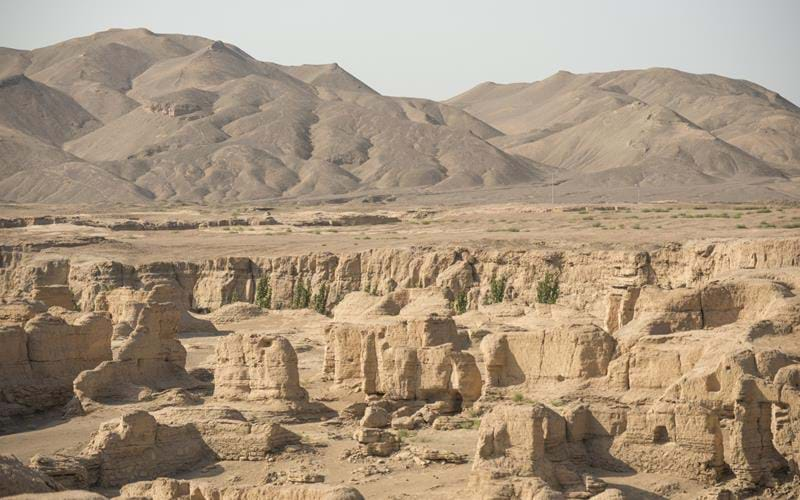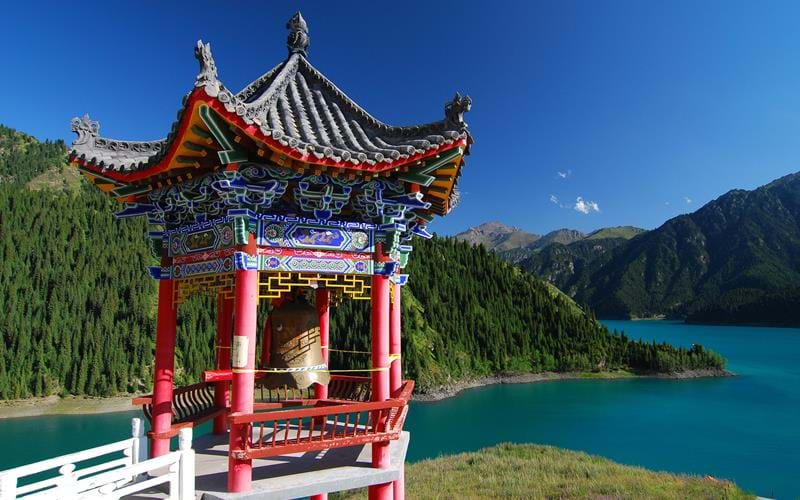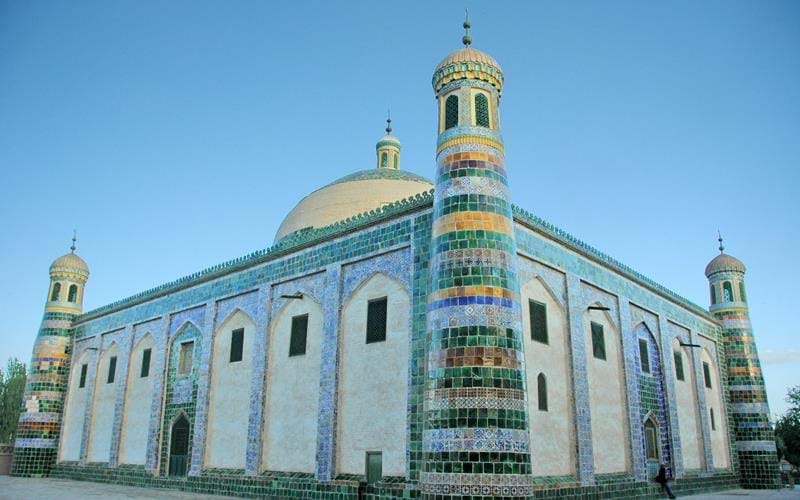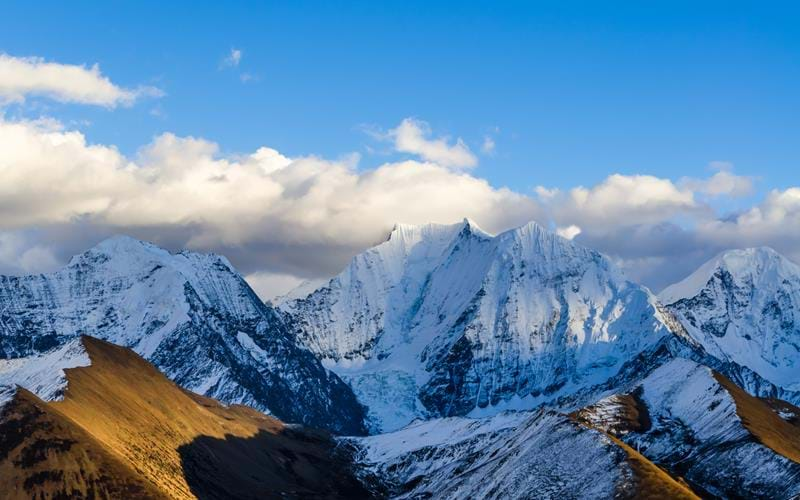Follow in Marco Polo’s footsteps on a journey from the imperial heartland of China’s eastern seaboard to the dry, dusty capitals of Central Asia –…
View more
Retrace the route followed by the Buddhist monks and caravan traders of the Tang Dynasty on this wonderful odyssey from the country’s heartland to the wild west of Xinjiang Province. Your Silk Road adventure begins with an exploration of the imperial cities the trade artery helped to create: Xian and Luoyang. After a visit to the Longmen Grottoes and Terracotta Army – two of China’s most spectacular archaeological sites – you’ll head west to Labrang monastery on the fringes of the Tibetan Plateau, then north to Jiayuguan Fort, at the far western end of the Great Wall, and the famous Mogao Caves at Dunhuang. It’s desert all the way from here, as you proceed west from Turpan, site of a couple of long deserted Silk Road cities, to Kashgar, the fabled Uyghur market town at the crossroads of high Asia – one of the most remote cities on earth.
Although this trip necessarily involves a lot of travel, none of it could be described as ‘arduous’. China’s domestic air and rail networks are modern and efficient, as are trunk roads and the air-con vehicles we use for the overland stages of this tour. Hotel standards are high in China’s heartland, but decline slightly as you travel west into Xinjiang.
Cultural Holidays River Cruising Holidays Adventure Holidays
Fly from the UK to Shanghai. Non-stop flights take around 11hrs; indirect services longer, depending on the route and carrier.
On arrival at Shanghai airport, you’ll be met by your guide and accompanied to your hotel. Spend the rest of the day relaxing after your long journey, perhaps heading out in the early evening for a stroll on the Bund to watch the extraordinary skyline of Pudong, across the Huangpo River, light up after sunset.
Visit Shanghai’s superb archaeological museum in the morning, before catching your flight to Luoyang, site of China’s ancient capital and the official start / end point of the ancient Silk Road. Take in the city’s museum and White Horse Temple in the afternoon, where the Buddhist monk Xuan Zang began his famous journey to India in 629AD.
With over 120,000 pieces on display, Shanghai Museum holds some of China’s finest cultural treasures, ranging from sumptuous Shang Bronzes to jade wine vessels from the Qing period and 7th century Sancai figures, as well as displays of priceless Ming ceramics. In Luoyang, the Six-Horses Carriage museum showcases recently discovered chariot burials dating from time of the Eastern Zhou (3rd century BC).
Later in the afternoon you’ll be driven half an hour east of town to the ancient White Horse Temple (‘Baima Si’), China’s oldest Buddhist monastery, whose prayer halls contain a host of treasures, including a five-foot-tall Buddha made of solid jade, and another dating from the Eastern Han period of the 3rd century AD.
Visit the famous Shaolin Temple today to watch a mass Kung Fu demonstration, then drive to the ‘Forest of Pagodas’ at the foot of Songshan mountain.
Today you’ll visit the Shaolin Temple, which sits at the foot of sacred Mount Songshan. Renowned as the crucible of Kung Fu, it attracts students and martial arts fans from all over the world. Hundreds perform synchronized routines in mass practice sessions each day – one of the region’s most striking sights. Behind it, a cemetery known as the Forest of Pagodas stands as a memorial to 14 centuries of Kung Fu masters. Prominent among the monuments is the ancient Songyue Temple where the Empress Wu, the only woman to ever rule China, used to pray in the 7th century – a fabulously exotic spectacle against the mountain backdrop.
Visit the Longmen Grottoes in the morning, before catching the train to Xi'an.
After an early breakfast, you’ll travel to the city’s outskirts to see one of the great landmarks of the ancient Silk Road. Dominated by a giant sitting Buddha, the Longmen Grottoes (5th century) occupy a glorious setting on the banks of the Yi River. Return to your hotel for lunch, then drive to the railway station, where you’ll catch a high-speed ‘G-Class’ train to Xi'an. Spend the evening exploring the atmospheric Muslim (‘Hui’) quarter, whose main street, Beiyuanmen, is lined with open kitchens serving an amazing array of traditional snacks and meals with a distinctly Central Asian flavour – a living legacy of the ancient trade across the great deserts to the west.
Take a bicycle tour around Xi'an’s Ming ramparts in the morning, then visit the ancient Wild Goose Pagoda, before driving out of the city to see the Terracotta Army after lunch.
Begin your tour of the ancient Chinese capital with a bicycle tour of Xi'an’s impressive Ming ramparts, which extend for 9 miles (14km) around the centre. Next, pay a visit to the six-storey Wild Goose Pagoda, built to hold the precious Buddhist texts brought back from India by the monk Xuan Zang in the 7th century, and which was, in its day, the tallest building in the world. In the afternoon you’ll head east out of the city to see the Terracotta Army archaeological site. The complex includes the pits holding the clay warriors themselves, the giant mound encasing the unexcavated tomb of the Ching Emperor, and a museum jam-packed with precious finds.
Drive to the airport in the morning to catch your flight to Lanzhou, in Gansu Province, from where you’ll be driven to the Tibetan town of Xiahe, site of resplendent Labrang Monastery.
A dramatic change of atmosphere marks the seventh day of your tour, as you fly from the modern metropolis of Xi'an to the wilds of Gansu. Huddled in a valley on the fringes of Tibet, Labarang Monastery forms a striking spectacle. The complex, founded in 1709, encloses six huge prayer halls and 18 temples, as well as hundreds of monks’ cells. Your guide will lead you to the upper level of the Gongtang Pagoda, whose terrace affords a superb view over the monastery, town and surrounding desert hills.
Re-visit Labrang Monastery in the morning after breakfast, then take a trip out on the surrounding grasslands to experience a nomad camp in the afternoon.
As soon as you hear the trumpets and drums emanating from the prayer halls in the early morning, you’ll want to climb the stone steps of the monastery again. Monks will probably be chanting and engaging in traditional theological debates in the courtyards. Superb views over the exotic building as its adjacent quarters are to be had from the ridges overlooking the town. Later, you’ll be offered a trip out to grasslands outside Xiahe, where you’ll have the chance to visit a nomad encampment, and taste the local delicacy: Tibetan yak butter tea.
Return to Lanzhou in the morning and catch an express train northwest to Jiayuguan, an industrial town on the Hexi Corridor which once stood at the far, western end of the Great Wall. Pay a visit to the reconstructed Ming Fortress on the outskirts in the late afternoon.
Jiayuguan Fort dominates a spectacular valley, bounded by two snow-covered ridges, at what was in Ming times the most westerly outpost of civilization in the Chinese Empire. Originally built in 1372 at the narrowest point in the Hexi Corridor, it was recently reconstructed by the government, and looks essentially as it would have in the 14th century, its pagoda-roofed bastions formidable against their hinterland of desert ridges. Foremost among the citadel’s monuments is the Gate of Sighs, through which those expelled from ancient China would have walked into barbarian country and exile.
You’ll have a full day to revisit the fort, and to explore the numerous vestiges of The Great Wall dotted around Jiayuguan, as well as fragments of ancient fortifications surviving in the area.
Today you’ll traverse the eastern edge of the Gobi to reach the greatest of all the historic monuments punctuating the Silk Road: the Mogao Caves, near Dunhuang.
Dating from between the 4th and 14th centuries, the Mogao Caves complex is the world's richest storehouse of ancient Buddhist sculpture and murals. For hundreds of years, precious manuscripts from India and beyond (including the Diamond Sutra, the world’s oldest printed book) were also brought here by travelling monks and secreted in a sealed cave on the site, where Aurel Stein discovered them between 1907 and 1914, eventually carrying the horde off to the British Museum (where it still resides).
A full day’s sightseeing is allotted for this extensive UNESCO World Heritage site. You’ll also have time to visit the Crescent Moon spring, which flows into a small lake cradled by the huge shifting sand dunes outside Dunhuang.
Created over a period of around 700 years, Dunhuang’s cave paintings decorate hundreds of separate excavations, although only the 20 most impressive are open to the public today. You’ll probably get through around 15 in your tour, which will also pause at the site’s state-of-the-art Research and Exhibition Centre, to look at the detailed facsimiles and displays on the history of the Silk Road.
Dunhuang’s ‘Crescent Moon Lake’ occupies a depression amid a tract of vast dunes outside the town. Visits are best in the evenings, when the crowds who come to climb the sand hills and enjoy toboggan and camel rides thin out considerably.
A long car and train journey across the eastern margins of the Tarim Basin today take you from Dunhuang to the oasis town of Turpan, site of several ruined Silk Road cities and home to the best museum in the region.
This atmospheric Uyghur oasis town of Turpan, on the northern Silk Road, lies at 30m below sea level, ensuring fiercely cold winters and scorching summers – perfect for growing fruit, notably grapes. A succession of large walled cities sprang up here over the centuries, whose eroded ruins may still be visited on the outskirts. Artefacts from these, including an impressive collection of mummies, are displayed at the town’s excellent museum, along with a superb array of dinosaur fossils. However, the most iconic sight in the area is the pot-bellied, round-topped Emin Minaret, which you can scale for a fine view of the surrounding snow peaks.
A compelling day’s sightseeing awaits you today, as you tour the ancient monuments rising from the desert around this distinctive town on the northern branch of the Silk Road.
Start the day’s tour with a visit to the Bezeklik ‘Thousand Buddha Caves’ complex, and the fascinating Karez Irrigation Site, where you can see the system of channels by means of meltwater was diverted to the area from the Tian Shan mountain range more than 2,000 years ago. In the afternoon, you’ll experience the resulting fertility yourself with a tour of a local grape farm in the Uyghur village of Tuyoq. Located on the floor of spectacular canyon amid a spur of the ‘Flaming Mountains’, Tuyoq has for centuries been an important Muslim pilgrimage site thanks to the presence of its outskirts of a pair of tiny domed tombs, which you can also visit.
In the morning, travel out of town to see the spectacular ghost city of Jiaohe, the most westerly outposts of the Tang empire in the 8th century. After lunch, depart by road for Urumqi, the region’s capital.
Located 6 miles (10km) outside Turpan, Jiaohe occupies a leaf-shaped plateau surrounded by cliffs, and although heavily eroded, retains its original street plan.
In the lap of the Tianshan mountains, Urumqi has been the region’s capital since the 19th century and is today a booming, modern city. Chief among its attractions is the Xinjiang Provincial Museum, in which a collection of well-preserved mummies excavated in cemeteries around the Tarim Basin takes pride of place. Intriguingly, some of the most ancient have fair hair and blue eyes!
Before catching your flight to the far west of Xinjiang in the afternoon, you’ll have time in the morning to drive up to one of the province’s best-loved viewpoints, overlooking the shores of aptly named ‘Heavenly Lake’, to the north of Urumqi.
Surrounded by snow peaks, pine forests and grassy meadows, Tian Chi (‘Heavenly Lake’) is exquisitely beautiful and offers a welcome respite from the relentless sand and scrub of the Tarim Basin. Its glacial turquoise colour contrasts vividly with the backdrop of 6,000-metre mountains, which include Bodga Feng. In summer the shores of the lake are frequented by nomadic Kazakh herders.
Spend today exploring Kashgar’s old town and monuments.
Although a rapidly modernizing city, Kashgar still feels incredibly remote and retains evocative vestiges of its mud-walled old town as well as numerous Islamic monuments dating from the 17th century, among them the green-tiled tomb of Abakh Khoja and some finely tiled mosques. Should you wish, your guide can also arrange for you to take tea with an Uyghur family in a traditional home to experience daily life in the city. Kashgar’s covered bazaar is not to be missed – look out for local Uyghur knives and musical instruments that would have been familiar to Tamerlane and Genghis Khan.
Transfer to the airport in the morning to catch your flight to Beijing.
It’s time to bid farewell to this city at the western limits of the Tarim Basin. Flying back to Beijing, you’ll appreciate the vast distances and unforgiving terrain which the ancient Silk Road traders – and the explorers of the 19th and early 20th centuries who followed in their wake – had to tackle. Weather permitting, you’ll also have a grandstand view of the Karakorums, Kun Lun range and Tianshan Mountains – one of the world’s most astonishing natural spectacles.
Transfer to the airport from your hotel to catch your return flight back to the UK.
✓ International flights from London
✓ 13 nights accommodation
✓ All internal transportation and transfers
✓ English-speaking guides
✓ Breakfast daily
✓ Entrance fees to sites and monuments listed in tour itinerary
With the Summer almost upon us, now is the time to begin planning your next summer adventures in Asia. Our Travel Specialists are ready to take your call and discuss the adventure you have been dreaming of.
Or call us on 0208 566 3739
